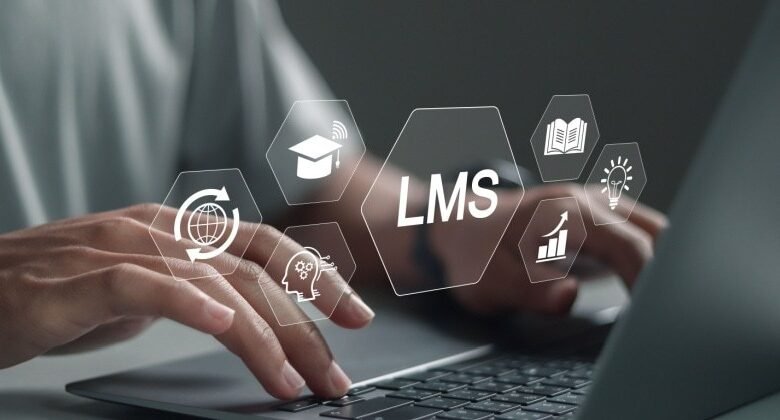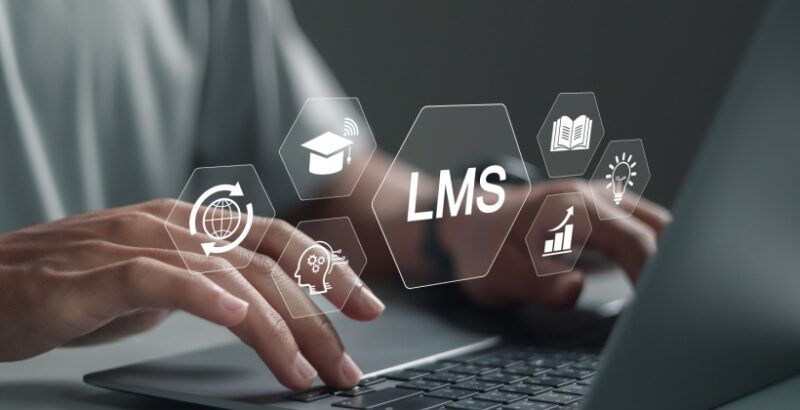LMS In 2025: Top Trends Transforming The Future Of Education


Top LMS Trends Shaping Education In 2025
The educational landscape is undergoing a revolutionary transformation, fueled by rapid technological advancements. As we approach 2025, Learning Management Systems (LMSs) are positioned to become the backbone of modern education, reshaping how content is delivered, monitored, and interacted with. These platforms, once seen as tools for basic content delivery, are now evolving to incorporate cutting-edge innovations that promise personalized, data-driven, and immersive learning experiences.
Top 7 LMS Trends In 2025 To Look Out For
1. AI-Powered Personalization
Artificial Intelligence (AI) is at the heart of educational transformation. In 2025, AI-driven LMS platforms will provide customized learning experiences tailored to individual needs.
- Adaptive learning paths
AI analyzes student behavior to create personalized learning journeys. For example, advanced learners can skip foundational lessons, while struggling students receive additional support materials. - Real-time feedback
AI offers instant corrections and suggestions, helping students stay engaged and progress effectively. - Predictive analytics
By identifying at-risk students early, educators can intervene proactively to improve outcomes. - Dynamic content delivery
AI ensures content aligns with students’ learning preferences, such as visual learners receiving video tutorials, while others access detailed text-based materials.
Both engagement and learning results are improved by this customization.
2. Data Analytics And Predictive Insights
Data analytics is revolutionizing the way educators understand and enhance student performance. In 2025, LMS platforms will harness Big Data for actionable insights.
- Comprehensive dashboards
Educators can track attendance, grades, and participation in real time. - Behavioral analysis
Insights into content preferences and activity patterns enable institutions to refine their strategies. - Long-term trends
Analytics can reveal curriculum strengths and weaknesses, guiding improvements. - Improved retention
Predictive tools identify disengaged students, allowing for timely interventions.
With these capabilities, data-driven decision-making will lead to better educational strategies and student success.
3. Mobile-First Learning
The ubiquity of smartphones has driven the demand for mobile-first LMS platforms, ensuring learning is accessible anywhere, anytime.
- Seamless multi-device learning
Responsive designs allow students to switch between devices without losing progress. - Push notifications
Instant updates on assignments or grades keep learners informed. - Offline access
Students can download resources for learning in low-connectivity areas. - On-the-go collaboration
Mobile tools enable real-time communication and teamwork.
This approach supports flexibility, especially for hybrid and remote learners, enhancing their educational experience.
4. Gamification For Engagement
Gamification has become a game changer in education, making learning more interactive and fun.
- Points, badges, and leaderboards
Reward systems motivate students by offering tangible achievements. - Quests and challenges
Students navigate through engaging tasks tied to learning objectives. - Storytelling elements
Narratives integrated into courses enhance understanding and retention. - Peer competition
Leaderboards foster healthy rivalry, while collaborative challenges promote teamwork.
Gamification not only boosts motivation but also increases retention and active participation.
5. Collaborative And Social Learning
The shift toward collaborative learning fosters peer-to-peer interaction and community building.
- Discussion forums
Students share ideas and resources, creating a vibrant learning community. - Peer-to-peer support
Collaborative projects and peer feedback strengthen understanding. - Instructor interaction
Messaging and video conferencing tools make instructors more accessible. - Real-time collaboration
Tools like live document editing enhance teamwork, especially in remote settings.
These features transform LMS platforms into hubs of interactive and community-driven learning.
6. Blockchain For Secure Credentialing
Blockchain technology is redefining credential verification, ensuring secure and transparent records.
- Tamper-proof certificates
Students can store and share verifiable digital diplomas and badges. - Decentralized verification
Credentials can be authenticated globally without central authorities. - Ownership of records
Learners gain full control over their achievements, streamlining sharing with institutions or employers. - Global recognition
Blockchain simplifies cross-border education and employment opportunities.
This innovation builds trust in digital credentials, streamlining the credentialing process for all stakeholders.
7. Immersive Learning With AR And VR
Augmented Reality (AR) and Virtual Reality (VR) are creating experiential learning environments that transform education.
- Virtual classrooms
Students can explore simulated environments, such as historical events or scientific concepts. - Interactive AR content
3D models and contextual overlays make learning engaging and memorable. - VR labs
Virtual laboratories provide hands-on experiences, especially for complex experiments. - Collaborative VR
Students and instructors can interact in shared virtual spaces, enhancing teamwork.
These immersive experiences make learning more engaging, practical, and effective.
Conclusion
As we move into 2025, these trends signal a transformative era for education, driven by the capabilities of modern LMS platforms. From AI-powered personalization to immersive AR and VR experiences, the future of education is becoming more dynamic, inclusive, and impactful. Educators, institutions, and students who embrace these innovations will thrive in this new educational landscape. By leveraging cutting-edge LMS trends, institutions can not only enhance learning outcomes but also create a more engaging and equitable experience for all learners.
Editor’s Note: Check out our directory to find, choose, and compare eLearning Industry’s Top LMS Software.
Originally published on January 31, 2025
Source link





